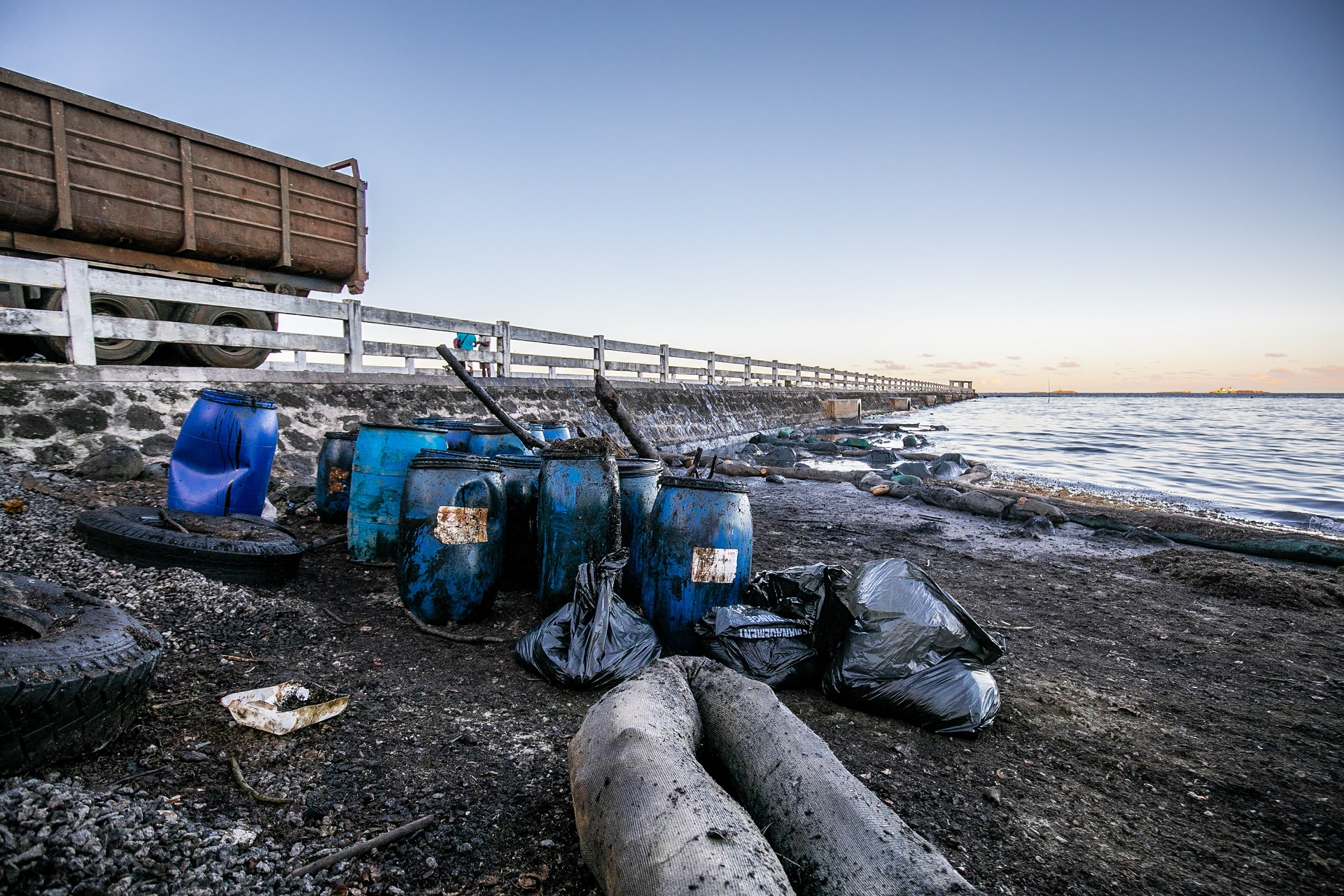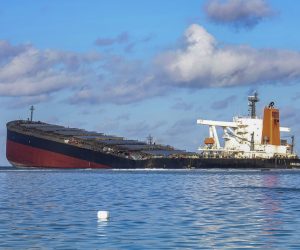Prepolovio se japanski teretni brod koji je izazvao ekološku katastrofu nakon što se prošli mjesec nasukao na greben na Mauricijusu, objavile su vlasti u subotu.
Stanje broda MV Wakashio pogoršalo se u subotu ujutro, a do podneva se prepolovio, rekao je mauricijski nacionalni krizni odbor.
“Oko 16.30 odvojio se prednji dio broda”, navodi se u izjavi. “Stručnjaci su savjetovali da se počne s planom vuče”.
Brod se nasukao na koraljni greben 25. srpnja i iz njega se izlilo 1000 tona nafte ugrozivši koralje, ribe i druge oblike života u moru. Znanstvenicu su rekli da je to dosad najgora ekološka katastrofa u zemlji.

epa08604950 Drums containing collected seaweed and straw mixed with leaked oil from the MV Wakashio, a Japanese owned Panama-flagged bulk carrier after it ran aground off the southeast coast of Mauritius, 15 August 2020. The ship was sailing from China to Brazil when it hit coral reefs near Pointe d’Esny on 25 July 2020. Oil from the grounded ship is damaging protected marine ecosystems. According to Prime Minister Pravind Jugnauth who declared a state of environmental emergency most of the oil has been removed from the ship however there are still fears the ship could break up spilling more oil into the ocean. Oil containment booms made by volunteers from human hair, straw and fabric have been set up in multiple locations to try and contain the oil slick. EPA/LAURA MOROSOLI
Većina nafte s broda ispumpana je, no ostalo je još 166 tona nafte i vlasti rade na tome da je uklone.
U petak je nešto preostale nafte s broda iscurilo u ocean, rekla je predsjednica mauricijske udruge za očuvanje mora.
Vlasti su u subotu postavile plutajuće barijere kako bi prikupili nafte oko broda.
Krizni odbor rekao je da je posebna pozornost dana osjetljivim mjestima poput morskog parka The Blue Bay, Ile aux Aigrettes i the Pointe D’Esny, utočištu rijetkih životinja.
Očekuje se da će se vrijeme pogoršati tijekom sljedećih nekoliko dana te da će valovi doseći 4,5 metara, priopćile su vlasti.Japanski ministar okoliša Shinjiro Koizumi rekao je u subotu da planira poslati skupinu dužnosnika iz ministarstva i drugih stručnjaka da procijene štetu.
Tanker je dug 299,5 i širok 50 metara. Plovi pod zastavom Paname i vlasnik je tvrtka Okiyo Marine, podružnica Nagashiki Shippinga.
Mauricijus, poznat po djevičanskim plažama, popularan je među turistima od kojih je zemlja prošle godine zaradila 1,6 milijardi dolara.
Stručnjaci kažu da se utjecaj izlijevanja još procjenjuje, ali šteta bi mogla još desetljećima pogađati Mauricijus i njegovo gospodarstvo koje ovisi o turizmu.
Uklanjanje broda vjerojatno će trajati mjesecima. Bivša kolonijalna sila Francuska rekla je da će pomoći u čišćenju.

epa08604952 Workers collect seaweed and straw mixed with leaked oil from the MV Wakashio, a Japanese owned Panama-flagged bulk carrier after it ran aground off the southeast coast of Mauritius, 15 August 2020. The ship was sailing from China to Brazil when it hit coral reefs near Pointe d’Esny on 25 July 2020. Oil from the grounded ship is damaging protected marine ecosystems. According to Prime Minister Pravind Jugnauth who declared a state of environmental emergency most of the oil has been removed from the ship however there are still fears the ship could break up spilling more oil into the ocean. Oil containment booms made by volunteers from human hair, straw and fabric have been set up in multiple locations to try and contain the oil slick. EPA/LAURA MOROSOLI































Komentari